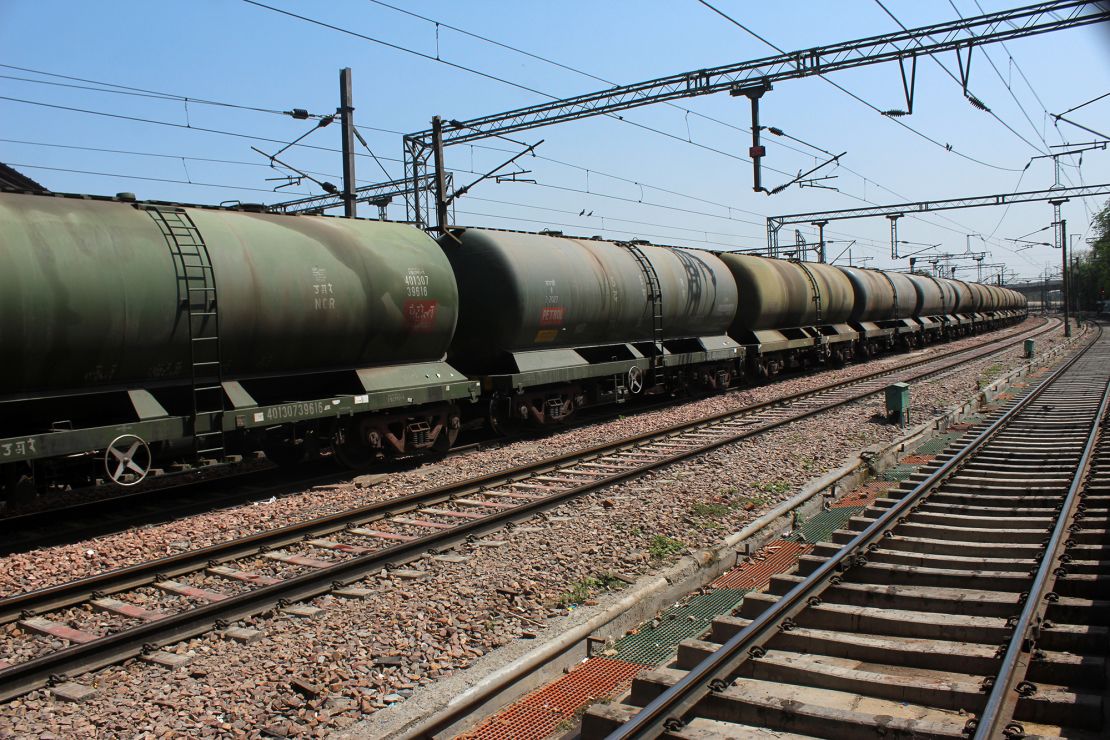Europe and the United States have barred the import of Russian oil to cut off a crucial revenue source for the Kremlin. But the plan to pile pain on President Vladimir Putin, forcing him to reconsider his war in Ukraine, hasn’t worked.
Russia is making just as much money from energy exports as it was before it invaded in late February. Meanwhile, inflation is surging globally, adding to political pressure on leaders such as US President Joe Biden, British Prime Minister Boris Johnson and French President Emmanuel Macron.
As leaders from top economies gather in Germany on Sunday for a G7 meeting, they’ll try to reach a consensus on what to do next. Unfortunately, on oil, few good options are available.
Several measures are being discussed, from price caps on Russian energy imports, centralized purchasing by the European Union, insurance bans on ships and targeting countries that continue to buy from Moscow. They all have downsides, and some could push prices even higher — risking popular support for the West’s resolve to punish Putin.
“There are tools available to go harder after Russia, but they come with significant costs directly to consumers in the US and Europe,” said Robert Johnston, an adjunct senior research scholar at the Columbia Center for Global Energy Policy.
Imposing sanctions on countries that continue to scoop up large volumes of Russian crude oil, including China and India, would wreak havoc on global markets that are already under severe strain. And while Treasury Secretary Janet Yellen recently said the United States wants to discuss a cap on the price of Russian oil, such a complex mechanism may not be the fix the West is looking for.
“It distorts the market at a time when the market certainly needs to function well, and there are too many workarounds,” Johnston said.
Russia keeps cashing in
The United States, the United Kingdom and Canada have announced bans on Russian oil imports. More significantly, Europe will follow suit for Russian oil it imports by sea, a huge step given its longstanding reliance on Russia’s energy supplies. The bloc says the ban will apply to 90% of Russian oil imports by the end of the year.
European customers have already pulled back. Russian oil exports to Europe dropped to 3.3 million barrels per day in May, falling by 170,000 barrels per day compared to the previous month, according to the International Energy Agency.
But an uptick in exports to Asia helped make up for a large chunk of those losses. China — taking advantage of huge price discounts — saw its imports reach 2 million barrels per day for the first time. India’s imports have also spiked, hovering near 900,000 barrels per day in May.
“We are actively engaged in reorienting our trade flows and foreign economic contacts towards reliable international partners, primarily the BRICS countries,” Putin said Wednesday, referring to the bloc of developing economies that also includes Brazil, India, China and South Africa.

Russia is selling barrels of its Urals crude for about $35 cheaper than the Brent global benchmark, which was last trading near $113 per barrel. But because prices are up sharply this year due to the aftershocks of the pandemic and the war, they’ve still been making tons of money.
Russian oil export revenues increased by $1.7 billion in May to about $20 billion, according to the IEA. That’s well above the 2021 average of roughly $15 billion.
“The Russians are still getting a pretty good price,” Johnston said.
Senior US administration officials said that dealing with this dynamic will be a priority at the G7 meeting. Speaking with reporters on Wednesday, they outlined their goal: maximizing pain on Putin’s regime, while minimizing spillover effects for the rest of the world.
“We’ll expect them to speak to, how can we take steps that further reduce Russia’s energy revenues?” one official said. “And how do we do so in a way that stabilizes global energy markets and lessens the disruptions and pressures that we’ve seen?”
What tools are left?
To make it harder for China, India and other countries to keep importing Russian oil, Europe intends to phase in a ban on insuring ships that carry Russian crude. If the United Kingdom joins in, as expected, that would deal a blow to the global system for transporting fuel, given the dominance of the Lloyd’s of London insurance market. The Biden administration is nervous the measure will cause prices to soar.
Still, Mai Rosner, a campaigner at the nonprofit Global Witness, said Western countries need to go further to get Russian oil off the market quickly, since any delay gives market participants time to come up with creative ways to skirt the rules.
“These piecemeal sanctions are leaving loopholes for the fossil fuel industry to exploit,” Rosner said.
The United States, with Europe’s backing, could enact so-called secondary sanctions targeting third-party countries that have continued to do business with Russia, as it has done with Iran and Venezuela. The US government hasn’t ruled this out.
But such a move would generate so much turmoil that experts view it as unlikely — especially given the growing political blowback leaders in the West face over the fastest price increases in decades.
If China and India had to find replacement barrels, the price of oil could easily top $200 per barrel, according to Darwei Kung, portfolio manager for commodities at DWS.
“It’s hard to see a world where the US puts [such] sanctions on Iran and Venezuela and Russia at the same time,” Johnston said. “The oil has to come from somewhere.”

Biden has increasingly emphasized that fighting 40-year-high inflation is a top priority ahead of the midterm elections in November.
Macron, who recently lost the legislative backing he has enjoyed for his first term in office, has pledged to address a growing cost-of-living crisis, while the UK’s Johnson — who suffered two huge by-election defeats last week — has appointed a “Cost of Living Business Tsar” to work with the private sector on possible solutions.
Putting a cap on the price of Russian crude is one solution that’s been tossed around. That would mean Russia isn’t cut off from the market completely, but would be forced to sell oil for such a cheap price that it wouldn’t be able to profit.
A price cap “would push down the price of Russian oil and depress Putin’s revenues while allowing more oil supply to reach the global market,” Treasury Secretary Yellen said last week.
Countries like Germany have said they’re open to looking into the option. But it’s not clear how the West could enforce such a policy, or how it would even get countries like China and India to sign on.
“I think the more complicated the system is, the more likely there are challenges for it,” Kung said. “[The] market system works because in a way it’s very simple. It’s very efficient.”
Governments in the West could also try to ease constraints by either boosting supply or letting prices run so high that demand starts to drop. Neither is a simple calculus.
Some countries in the Organization of the Oil Exporting Countries, or OPEC, have capacity to ramp up production, and Biden plans to visit Saudi Arabia to shore up relations next month. But much of the cartel’s capacity is already maxed out.
In the event of a global recession — spurred in part because fuel prices are so high — demand for energy would drop, and prices could begin to fall on their own. But that would be deeply painful, involving job losses and economic damage, especially for lower-income families.








